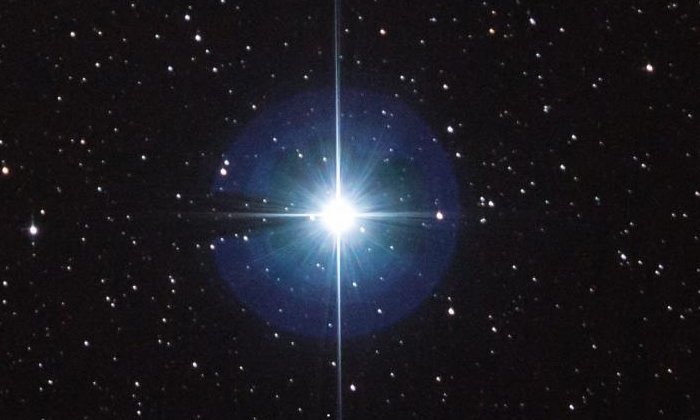Eddie Gonzales Jr. – MessageToEagle.com – Astronomers have probably discovered a giant, hot planet orbiting Vega, one of the brightest stars in the night sky.
The relatively young star, Vega, is part of the constellation Lyra and has a mass twice that of our own sun. This celestial body sits just 25 light-years, or about 150 trillion miles, from Earth — pretty close, astronomically speaking.

“It’s bright enough that you can observe it at twilight when other stars are getting washed out by sunlight,”said Samuel Quinn, an astronomer at the Harvard and Smithsonian Center for Astrophysics (CfA).
Despite the star’s fame, researchers have yet to find a single planet in orbit around Vega. If the team’s findings bear out, (they made decade–long observations from the ground) the alien planet would orbit so close to Vega that its years would last less than two-and-a-half Earth days. (Mercury, in contrast, takes 88 days to circle the sun). This candidate planet could also rank as the second hottest world known to science — with surface temperatures averaging a searing 5,390 degrees Fahrenheit.
Now, the team presents an analysis of 1524 spectra of Vega spanning 10 yr, in which we search for periodic radial-velocity variations, and it can help to narrow down where other, exotic worlds might be hiding in Vega’s neighborhood.
“This is a massive system, much larger than our own solar system,” Hurt said. “There could be other planets throughout that system. It’s just a matter of whether we can detect them.”
Scientists have discovered more than 4,000 exoplanets, or planets beyond Earth’s solar system, to date, but only few of them circle stars that are as bright or as close to Earth as Vega. That means that, if there are planets around the star, scientists could get a really detailed look at them.
“It would be really exciting to find a planet around Vega because it offers possibilities for future characterization in ways that planets around fainter stars wouldn’t,” Quinn said.
Vega is what scientists call an A-type star, the name for objects that tend to be bigger, younger and much faster-spinning than our own sun. Vega, for example, rotates around its axis once every 16 hours — much faster than the sun with a rotational period that clocks in at 27 Earth days. Such a lightning-fast pace, can make it difficult for scientists to collect precise data on the star’s motion and, by extension, any planets in orbit around it.
“If you have a planet around a star, it can tug on the star, causing it to wobble back and forth,” Quinn said.
The search may have paid off, said Hurt, who began the study as a summer research fellow working for Quinn at the CfA. The team discovered a signal that indicates that Vega might host what astronomers call a “hot Neptune” or maybe a “hot Jupiter.”
“It would be at least the size of Neptune, potentially as big as Jupiter and would be closer to Vega than Mercury is to the sun,” Hurt said.
There is still much to do before, the team can announce the discovery of this hot planet.
For now, the student is excited to see his hard work reflected in the constellations: “Whenever I get to go outside and look at the night sky and see Vega, I say ‘Hey, I know that star.”






